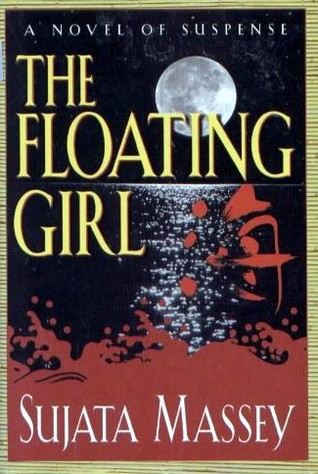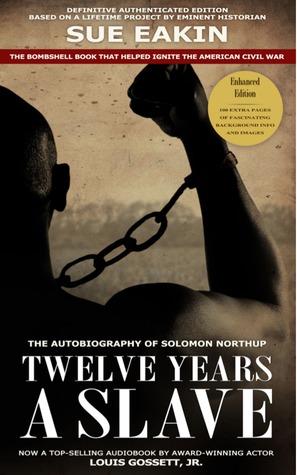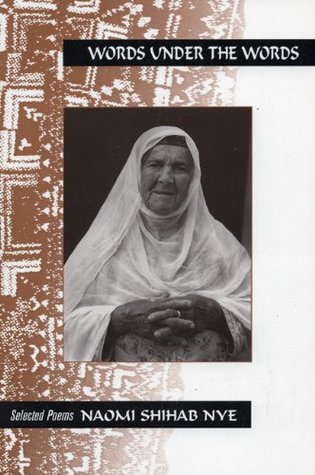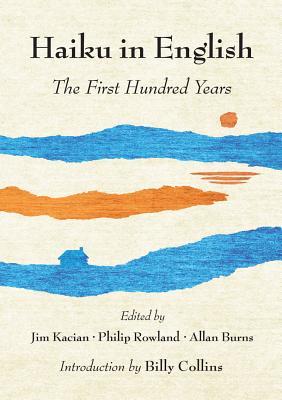In 2014, I read 48 books, five more than I read in each of the previous two years. Now, I must admit that 6 of these books were chapter books for kids that I read with my daughter. Some people would not count these, but I do. Taking those books out of the equation, I read almost the same number of books as last year.
Forty eight percent of the books were e-books. Twenty-nine percent were traditionally printed books and twenty-three percent were audio books. Fiction dominated my reading this year with 58% of books being works of fiction. Twenty-three precent of the books were poetry and 19 percent were non-fiction.
Here is my list of the top 10 books that I read in 2014.
 10. The Complete Collected Poems by Maya Angelou. With the passing of Maya Angelou, I decided to read some of her work which somehow I had missed previously. I read both I Know Why a Caged Bird Sings and The Complete Collected Poems. Like any collection of poems, there are some that I like better than others. While Angelou will not be on my list of favorite poets, I have a lot of respect for anyone who writes poetry. This book is definitely worth reading.
10. The Complete Collected Poems by Maya Angelou. With the passing of Maya Angelou, I decided to read some of her work which somehow I had missed previously. I read both I Know Why a Caged Bird Sings and The Complete Collected Poems. Like any collection of poems, there are some that I like better than others. While Angelou will not be on my list of favorite poets, I have a lot of respect for anyone who writes poetry. This book is definitely worth reading. 9. Hoot by Carl Hiaasen. This chapter book is targeted at middle school children. I read it to my six year old daughter and she enjoyed it. Younger children can appreciate these stories more than most people think. Since Carl Hiaasen is also a writer of adult mystery books, he held my attention and had me on the edge of chair wanting more.
9. Hoot by Carl Hiaasen. This chapter book is targeted at middle school children. I read it to my six year old daughter and she enjoyed it. Younger children can appreciate these stories more than most people think. Since Carl Hiaasen is also a writer of adult mystery books, he held my attention and had me on the edge of chair wanting more. 8. The Floating Girl by Sujata Massey. I read mystery novels not so much for the plot as for the unique voice of the main character. I want to enter their world as they see it. Rei Shimura is one of those voices. Rei was born in America of a Japanese father and American mother. She is living in modern Japan but is not accepted as Japanese. I read three Rei Shimura mysteries this and I found them enjoyable. Besides The Floating Girl, I read The Flower Master and The Bride's Kimono.
8. The Floating Girl by Sujata Massey. I read mystery novels not so much for the plot as for the unique voice of the main character. I want to enter their world as they see it. Rei Shimura is one of those voices. Rei was born in America of a Japanese father and American mother. She is living in modern Japan but is not accepted as Japanese. I read three Rei Shimura mysteries this and I found them enjoyable. Besides The Floating Girl, I read The Flower Master and The Bride's Kimono.Sujata Massey was born in Sussex, England to parents from India and Germany and grew up in St. Paul, Minnesota. She attended John Hopkins University and worked as a reporter for the Baltimore Evening Sun. She moved to Japan, taught English and began writing her first novel.
 7. Life Class by Pat Barker. I discovered the writer, Pat Barker, while listening to the World Book Club podcast. She was being interviewed about her World War I novels. Barker is a historical novelist and her area of expertise is World War I. Life Class is about a small group of art students who become caught up in World War I. The main character is a young man named Paul Tarrant who is struggling to find out if he has the skills to be an artist. His love interest is a fellow art student, Elinor Brooke. Another art student, Kit Neville, also is pursuing Elinor and she enjoys the attentions of both men. The war disrupts their idyllic life and changes them forever. Barker details life in England in the early part of the 20th century. I found the novel to be a great read.
7. Life Class by Pat Barker. I discovered the writer, Pat Barker, while listening to the World Book Club podcast. She was being interviewed about her World War I novels. Barker is a historical novelist and her area of expertise is World War I. Life Class is about a small group of art students who become caught up in World War I. The main character is a young man named Paul Tarrant who is struggling to find out if he has the skills to be an artist. His love interest is a fellow art student, Elinor Brooke. Another art student, Kit Neville, also is pursuing Elinor and she enjoys the attentions of both men. The war disrupts their idyllic life and changes them forever. Barker details life in England in the early part of the 20th century. I found the novel to be a great read. 6. Saving Fish From Drowning by Amy Tan. A fantastic story that is not for everyone. If you are looking for storytelling in a straight line with lots of action this book is not for you. In telling a great story, Amy Tan travels down many paths and bunny trails providing us with fascinating information on various minor characters and history. I would also recommend that you listen to the audio version instead of reading it yourself. Tan does a superb job of narrating the book herself.
6. Saving Fish From Drowning by Amy Tan. A fantastic story that is not for everyone. If you are looking for storytelling in a straight line with lots of action this book is not for you. In telling a great story, Amy Tan travels down many paths and bunny trails providing us with fascinating information on various minor characters and history. I would also recommend that you listen to the audio version instead of reading it yourself. Tan does a superb job of narrating the book herself. The story is told in the first person narration of a ghost, a woman who has recently died under strange circumstances. Just before she is to lead of a group of her friends on a tour of Burma, she dies with her throat slit. But she wakes to find herself a ghost so she accompanies her friends who decide to continue the trip even though their leader is dead. The ghost reports on the trials and tribulations of the group as they travel through China and Burma (now known as Myanmar) including being kidnapped by a tribal group.
I read the Joy Luck Club when it first came out many years ago, but have not read anything by Amy Tan since then. I think I will need to go back and read some of her other books to see what I have missed.
 5. Sleeping Preacher by Julia Kadorf. When I was a child, I was fascinated by the story my mother told about the sleeping preacher, John Kaufman. After graduating college, I set out to write a historical novel about his life. Unfortunately, I ran into some obstacles and never finished the novel. In the early 1900's he had visited the church my grandmother attended. During the late 1800's until the first decade of the 20th century, a number of sleeping preachers arose around the world. The preachers, both men and women, would enter into a trance and preach a coherent sermon. People would stick needles in their legs to see if they were faking.
5. Sleeping Preacher by Julia Kadorf. When I was a child, I was fascinated by the story my mother told about the sleeping preacher, John Kaufman. After graduating college, I set out to write a historical novel about his life. Unfortunately, I ran into some obstacles and never finished the novel. In the early 1900's he had visited the church my grandmother attended. During the late 1800's until the first decade of the 20th century, a number of sleeping preachers arose around the world. The preachers, both men and women, would enter into a trance and preach a coherent sermon. People would stick needles in their legs to see if they were faking.I was immediately interested in Sleeping Preacher by Julia Kasdorf as soon as I read a review of the book. The poet, Julia Kasdorf, also attended the same college I did, a decade later, but I have never met her. While many of these poems address growing up Mennonite, some do not. Kasdorf writes of herself as well as family. The opening lines of A Family History about her mother read:
"At dusk the girl who would become my mom
must trudge through the snow, her legs
cold under skirts, a bandanna tight on her braids."
Each poem is a story packed with description of a world that many of us have never encountered. The opening lines of the poem, August, read:
"Dad's mother was coming home
from picking huckleberries on the mountain
when sunlight spooked the horse, and it tore
through a pasture fence, dragging the buggy
until it broke lose, hurling the children,
killing their mother, spilling
those silver pails of sweet, black fruit."
While the poem goes on to tell of other women who died in the month of August, these opening seven lines encapsulate a powerful story in their own right. The attention to detail builds the story image by image.
In the poem Friendschaft, Kasdorf captures Mennonite genealogy.
"As I grow up, the great aunts click their tongues.
They are looking for signs of their lives
in my limbs. It's the Hartzler blood that makes you
dark and thin. It's just like Aunt Toot to love
olives and pickles and fuss like a hen.
Your Yoder nose...."
I can't even begin the number of times I heard the same type of remarks growing up. Kasdorf was six when her family bought their first television and she captures that moment in a poem. I was seventeen when my family bought our first TV. I found in these poems much that I have heard and remember.
The first poem of Kasdorf that I read before buying the book was What I Learned from My Mother. The poem discusses what to do when someone dies. She closes the poem with these lines:
"To every house you must enter, you must offer
healing: a chocolate cake you baked yourself,
the blessing of your voice, your chaste touch."
The title poem, The Sleeping Preacher, tells the story of church reform through the eyes of her great-grandmother. The closing lines read:
"She did not think of us,
only to save us, leaving nothing
for us to touch or see
except this stubborn will to believe."
I highly recommend this book to poets and other readers, especially those interested in learning more about the Mennonite culture and way of life.
 4. Twelve Years a Slave by Solomon Northup. If you have watched the movie, Twelve Years a Slave, then you should read this book. If you have not watched the movie,Twelve Years a Slave, then you definitely need to read this book. The book is an as-told-to story by Solomon Northup, a man who was born, raised and living as a free person in New York state. As Northup tells the story, he was conned into traveling to Washington D.C. where he was drugged, kidnapped and sold into slavery in the deep South in 1840. He spent 12 years as a slave before he was able to send information of his whereabouts to friends who traveled south and freed him. .
4. Twelve Years a Slave by Solomon Northup. If you have watched the movie, Twelve Years a Slave, then you should read this book. If you have not watched the movie,Twelve Years a Slave, then you definitely need to read this book. The book is an as-told-to story by Solomon Northup, a man who was born, raised and living as a free person in New York state. As Northup tells the story, he was conned into traveling to Washington D.C. where he was drugged, kidnapped and sold into slavery in the deep South in 1840. He spent 12 years as a slave before he was able to send information of his whereabouts to friends who traveled south and freed him. .The book shares the experience of one man as a slave and all the horrors that he faced. Married with children before the kidnapping, Northup suffered as no person should be made to suffer. He was whipped, beaten and almost hung. His skills as a violin player and his intelligence kept him alive through these difficult, almost unbearable times. He was also forced to whip other slaves.
The book was written by David Wilson who served as Northup's ghost writer. It followed in the footsteps of the publishing success of Uncle Tom's Cabin and was used by the abolition forces to further their cause. After Northup's release from slavery, he traveled around the north giving anti-slavery speeches and may have been involved in the Underground Railroad, though, there is no evidence to support this. Published in 1853, the book was an instant success with 8,000 copies being sold in the first month. The book went out of print in 1856 and remained out of print until 1968.
Along side the amazing story of Solomon Northup is the fascinating story of Sue Lyles Eakin and the work she did to bring the book to the attention of American readers in the 20th and 21st centuries. Sue Eakin discovered an original copy of the book in a plantation home near where Northup was a slave when she was 12 years old. Northup's story became her life's passion. Dr. Eakin wrote her master's thesis about Northup's story and after decades of research produced the first authenticated edition in 1968. She continued to spend her life verifying, validating and substantiating the story through thousands of hours of research. In 2007, at the age of 88, she completed her final definitive edition with over 100 pages of new information, images and maps. In her spare time, she authored over a dozen other history books and was a history professor.
One of the fascinating facts that I learned in this book was that in 1840 New York state passed a law authorizing the governor the authority to seek the release of free people who were sold into slavery. This law is what the friends of Solomon Northup used to travel to Louisiana and secure his release.
Amazon lists more than 30 different editions of this book. I would recommend you purchase this edition by Dr. Sue Eakin which contains all her documentation and verification of the facts in the story.
 3. Out Stealing Horses by Per Petterson. A fantastic novel. I heard an interview with Petterson on the BBC World Book Club and decided to read the novel. The book is about the relationship of a father and son set in Norway. A 67 year old man reflects back on his life and the summer of 1948 which he spent with his father. I highly recommend this book to all fathers, sons and daughters.
3. Out Stealing Horses by Per Petterson. A fantastic novel. I heard an interview with Petterson on the BBC World Book Club and decided to read the novel. The book is about the relationship of a father and son set in Norway. A 67 year old man reflects back on his life and the summer of 1948 which he spent with his father. I highly recommend this book to all fathers, sons and daughters. 2. Words Under the Words by Naomi Shihab Nye. With this book, Naomi Shihab Nye has become one of my favorite contemporary poets. The book is filled with phenomenal lines and images. In my first reading of the 104 poems, I marked 30 poems that I wanted to read again. Here are the beautiful opening three lines of Biography of an Armenian Schoolgirl.
2. Words Under the Words by Naomi Shihab Nye. With this book, Naomi Shihab Nye has become one of my favorite contemporary poets. The book is filled with phenomenal lines and images. In my first reading of the 104 poems, I marked 30 poems that I wanted to read again. Here are the beautiful opening three lines of Biography of an Armenian Schoolgirl."I have lived in the room of stone where voices become
bones buried under us long ago. Where you could dig
for centuries uncovering the same sweet dust."
In the poem, At Otto's Place, Naomi writes:
"Could I live like this? I ask myself
and I know, somehow, I must.
More and more my life is peeling paint,
straight horizons.
More and more my name dissolves in the air,
salt, something invisible I taste,
and forget."
I love the phrase, "my life is peeling paint." What a powerful image!
In the poem, The House in the Heart, Nye writes:
"This body we thought so important,
it's a porch, that's all.
I know this, but I don't know
what to do about it."
Our bodies are a resting place — a place from which we look out at the world. We know many things but knowledge alone is not enough. We need to learn what to do to change things. Nye packs so much into these four lines.
In the poem, Jerusalem, Nye writes:
"To live without roads seemed one way
not to get lost. To make maps
of stone and grass, to rub stars together
and find a spark."
It is only because we have roads that we get lost. If we did not have roads to follow, we would not lose our way. So often we get so focused on where we want to go that we forget where we are. Maybe our goals and dreams are not as important as we think.
I highly recommend this book to anyone who loves to read poetry as well as anyone who loves words.
1. Haiku in English: The First Hundred Years edited by Philip Rowland, James Kacian, and Allan Burns. The value of this collection of haiku is that it tells the story of haiku written in English over the last one hundred years. If you are a haiku poet and have read and studied haiku then I recommend that you first read the essay by Jim Kacian at the end of the book. It is superb!
 This anthology of English-language haiku is edited by Jim Kacian, Philip Rowland and Allan Burns. To put the book together, they obviously have read thousands of haiku published in the haiku magazines in the the last 60 years. They document the growth and changes in haiku through the work they have selected.
This anthology of English-language haiku is edited by Jim Kacian, Philip Rowland and Allan Burns. To put the book together, they obviously have read thousands of haiku published in the haiku magazines in the the last 60 years. They document the growth and changes in haiku through the work they have selected.
The anthology begins with some of the shorter poems of Ezra Pound and includes some well-known poets and writers like Wallace Stevens, Amy Lowell, Langston Hughes, e. e. cummings, Allen Ginsberg, Gary Snyder, and Jack Kerouac. Most of these poets dabbled in haiku but their real work was elsewhere. Then the anthology shifts to early haiku poets like Cor van den Heuvel who is best known for his anthology called The Haiku Anthology. The book is still the best collection of haiku written in English. It is the book that I would recommend to anyone interested in reading haiku.
For a period of 7 years between 1975 to 1982, I wrote and published more than 100 haiku in more than 20 haiku magazines. I also read the haiku of many of the poets in these pages. One of my favorites is James W. Hackett. I own several of his small books. Others who I read include: Nick Virgilio and Robert Spiess. Spiess was the editor of Modern Haiku, one of the best haiku magazines and one of the oldest that is still published. I was fortunate to have dinner with the man one evening in Madison, WI where he lived.
For a period of 7 years between 1975 to 1982, I wrote and published more than 100 haiku in more than 20 haiku magazines. I also read the haiku of many of the poets in these pages. One of my favorites is James W. Hackett. I own several of his small books. Others who I read include: Nick Virgilio and Robert Spiess. Spiess was the editor of Modern Haiku, one of the best haiku magazines and one of the oldest that is still published. I was fortunate to have dinner with the man one evening in Madison, WI where he lived.
I also remember reading the haiku of John Wills, Rod Willmot, Virginia Brady Young, Michael McClintock, Geraldine Clinton Little, Janice Bostok, Alan Pizzarelli, Elizabeth Searle Lamb, Marlene Mountain, George Swede, Ruth Yarrow, Gunther Klinge, Peggy Willis Lyles, Alexis Rotella, James Kirkup, and Lee Gurga. I own two hardback collections of Raymond Roseliep, the Iowa priest who wrote haiku: Rabbit in the Moon and Listen to Light. Lorraine Ellis Harr, who has three haiku in this anthology, published my first haiku in her magazine, Dragonfly. I also met Randy Brooks who published several of my haiku in his magazine, High/Coo. So reading this book for me was like taking a trip down memory lane. A special thanks to Jim Kacian, Philip Rowland and Allan Burns.
You may also want to read:
Ten Best Books I Read in 2012
The Best Fifteen Books I Read in 2013
The List of All the Books I Read in 2014
You may also want to read:
Ten Best Books I Read in 2012
The Best Fifteen Books I Read in 2013
The List of All the Books I Read in 2014
